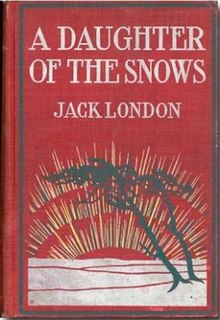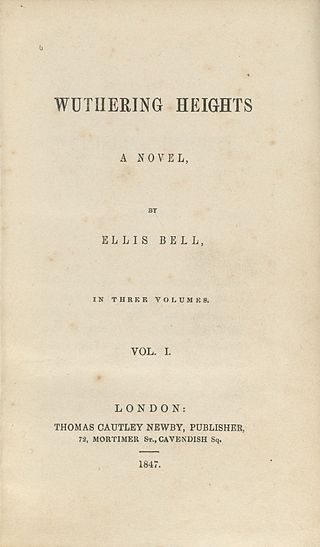
Wuthering Heights is the only novel by the English author Emily Brontë, initially published in 1847 under her pen name "Ellis Bell". It concerns two families of the landed gentry living on the West Yorkshire moors, the Earnshaws and the Lintons, and their turbulent relationships with the Earnshaws' foster son, Heathcliff. The novel was influenced by Romanticism and Gothic fiction.
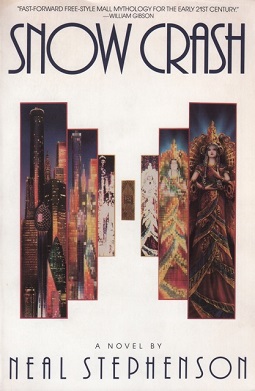
Snow Crash is a science fiction novel by the American writer Neal Stephenson, published in 1992. Like many of Stephenson's novels, its themes include history, linguistics, anthropology, archaeology, religion, computer science, politics, cryptography, memetics, and philosophy.

The Lady of the Lake is a name or a title used by several either mermaid or mermaid-like but human enchantresses in the Matter of Britain, the body of medieval literature and mythology associated with the legend of King Arthur. She plays several important roles in many stories, including providing Arthur with the sword Excalibur, eliminating Merlin, raising Lancelot after the death of his father, and helping to take the dying Arthur to Avalon. Different sorceresses known as the Lady of the Lake appear concurrently as separate characters in some versions of the legend since at least the Post-Vulgate Cycle and consequently the seminal Le Morte d'Arthur, with the latter describing them as a hierarchical group, while some texts also give this title to either Morgan or her sister.
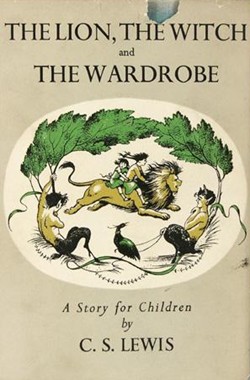
The Lion, the Witch and the Wardrobe is a portal fantasy novel for children by C. S. Lewis, published by Geoffrey Bles in 1950. It is the first published and best known of seven novels in The Chronicles of Narnia (1950–1956). Among all the author's books, it is also the most widely held in libraries. It was the first of The Chronicles of Narnia to be written and published, but is marked as volume two in recent editions that are sequenced according the stories' internal chronology. Like the other Chronicles, it was illustrated by Pauline Baynes, and her work has been retained in many later editions.
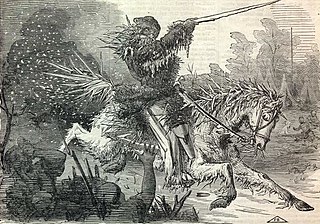
Jack Frost is a personification of frost, ice, snow, sleet, winter, and freezing cold. He is a variant of Old Man Winter who is held responsible for frosty weather, nipping the fingers and toes in such weather, coloring the foliage in autumn, and leaving fern-like patterns on cold windows in winter.
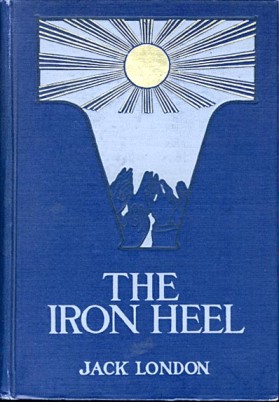
The Iron Heel is a political novel in the form of science fiction by American writer Jack London, first published in 1908.
The Aubrey–Maturin series is a sequence of nautical historical novels—20 completed and one unfinished—by English author Patrick O'Brian, set during the Napoleonic Wars and centring on the friendship between Captain Jack Aubrey of the Royal Navy and his ship's surgeon Stephen Maturin, a physician, natural philosopher, and intelligence agent. The first novel, Master and Commander, was published in 1969 and the last finished novel in 1999. The 21st novel of the series, left unfinished at O'Brian's death in 2000, appeared in print in late 2004. The series received considerable international acclaim, and most of the novels reached The New York Times Best Seller list. These novels comprise the heart of the canon of an author often compared to Jane Austen, C. S. Forester and other British authors central to English literature.
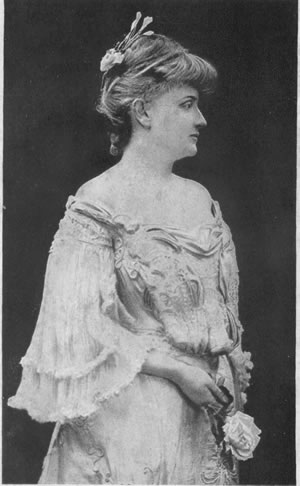
Gertrude Franklin Horn Atherton was an American writer. Many of her novels are set in her home state of California. Her bestselling novel Black Oxen (1923) was made into a silent movie of the same name. In addition to novels, she wrote short stories, essays, and articles for magazines and newspapers on such issues as feminism, politics, and war.

William Hale White, known by his pseudonym Mark Rutherford, was a British writer and civil servant. His obituary in The Times stated that the "employment of a pseudonym, and sometimes of two, was sufficient to prove a retiring disposition, and Mr. Hale White was little before the world in person."

Joan London was an American writer and the older of two daughters born to Jack London and his first wife, Elizabeth "Bess" Maddern London.
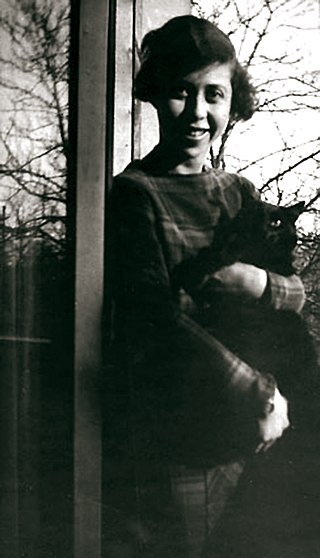
Irène Némirovsky was a novelist of Ukrainian Jewish origin who was born in Kiev, then in the Russian Empire. She lived more than half her life in France and wrote in French, but was denied French nationality. Arrested as a Jew under the racial laws – which did not take into account her conversion to Roman Catholicism – she was murdered in Auschwitz at the age of 39. Némirovsky is best known for the posthumously published Suite française.
Sarah Dunant is a British novelist, journalist, broadcaster, and critic. She is married with two daughters, and lives in London and Florence.
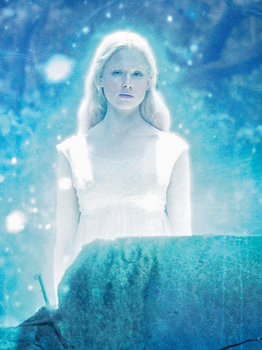
Ramandu's daughter, also known as Lilliandil in the 2010 film version of The Voyage of the Dawn Treader, is a fictional character from The Chronicles of Narnia by C. S. Lewis. Introduced in the 1952 book The Voyage of the Dawn Treader, she aids Caspian X and the crew of Dawn Treader to break an enchantment on three of the Seven Great Lords of Narnia. Eventually she becomes Queen of Narnia, after marrying Caspian X, and bears his son, Rilian. In the 1953 novel The Silver Chair, the Lady of the Green Kirtle, in the form of a snake, kills her though she later reappears in the 1956 book The Last Battle. The character appears in adaptations of the book series; the television serial The Chronicles of Narnia, where she is portrayed by Gabrielle Anwar, and The Chronicles of Narnia film series, where Laura Brent plays the role.

Peter Brown is a major character in the Oz novels of Ruth Plumly Thompson, who continued the series of Oz books after the death of their creator, L. Frank Baum. Thompson used Peter as the protagonist in three of her books: The Gnome King of Oz (1927), Jack Pumpkinhead of Oz (1929), and Pirates in Oz (1931).
Elizabeth Caroline Grey (1798–1869), aka Mrs. Colonel Grey or Mrs. Grey, was a prolific English author of over 30 romance novels, silver fork novels, Gothic novels, sensation fiction and Penny Dreadfuls, active between the 1820s and 1867. There is some controversy about the details of her life story, and if she actually authored any penny dreadfuls.

Selina Davenport was an English novelist, briefly married to the miscellanist and biographer Richard Alfred Davenport. Her eleven published novels have been recently described as "effective if stereotyped".
A pissing contest, pissing duel, or pissing match, is a game in which participants compete to see who can urinate the highest, the farthest, for the longest, or the most accurately. Although the practice is usually associated with adolescent boys, women have been known to play the game, and there are literary depictions of adults competing in it. Since the 1940s, the term has been used as a slang idiomatic phrase describing contests that are "futile or purposeless", especially if waged in a "conspicuously aggressive manner". As a metaphor it is used figuratively to characterise futile ego-driven battling in a pejorative or facetious manner that is often considered vulgar. The image of two people urinating on each other has also been offered as a source of the phrase.
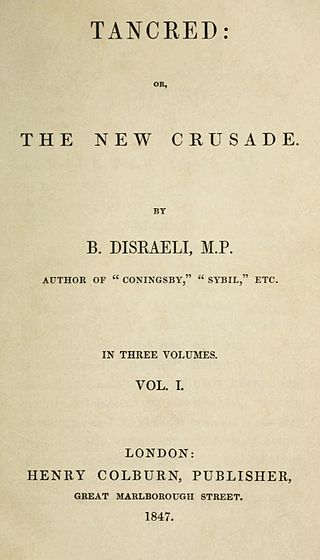
Tancred; or, The New Crusade (1847) is a novel by Benjamin Disraeli, first published by Henry Colburn in three volumes. Together with Coningsby (1844) and Sybil (1845) it forms a sequence sometimes called the Young England trilogy. It shares a number of characters with the earlier novels, but unlike them is concerned less with the political and social condition of England than with a religious and even mystical theme: the question of how Judaism and Christianity are to be reconciled, and the Church reborn as a progressive force.

Annie Shepherd Swan, CBE was a Scottish journalist and fiction writer. She wrote mainly in her maiden name, but also as David Lyall and later Mrs Burnett Smith. A writer of romantic fiction for women, she had over 200 novels, serials, stories and other fiction published between 1878 and her death. She has been called "one of the most commercially successful popular novelists of the later nineteenth and early twentieth centuries". Swan was politically active in the First World War, and as a suffragist, a Liberal activist and founder-member and vice-president of the Scottish National Party.
Alice Abigail Corkran was an Irish author of children's fiction and an editor of children's magazines. Born in France to Irish parents, she grew up in the stimulating environment of her mother's literary salon. She was a playmate of Robert Browning's ageing father, and still had his workbooks in her possession when she died. As well as writing a number of well received novels, she edited first the Bairn's Annual and then The Girl's Realm, being the founder of that magazine's Guild of Service and Good Fellowship, which maintained a cot at the Ormond Street Hospital for Sick Children, among other charitable works.
